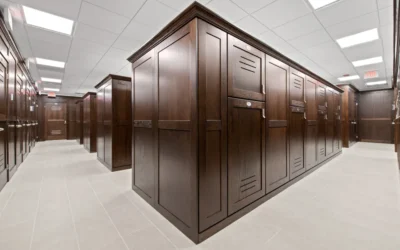Getting a new self-storage facility through the entitlement process has always been difficult, but it’s especially challenging as municipalities add layers of regulations and restrictions despite strong consumer demand for self-storage.
“The big issue on regulations is that it is so location specific,” said Justin Hodge, an attorney with Johns Marrs Ellis & Hodge law firm in Houston. Hodge has represented self-storage operators in Houston, Austin and Dallas metropolitan areas.
“Each jurisdiction has different requirements or barriers to entry for the permitting and entitlement process, which makes it difficult for new folks to go in and build,” Hodge said. Houston, for example, has no zoning laws but Dallas, Austin and all the suburban cities surrounding them have a host of different regulations.
Variety of regulation
Some cities restrict self-storage because of aesthetics, land use concerns, unremarkable tax revenue, and low job creation.
Jurisdictions may require a special-use permit. Self-storage construction may also be subject to other regulations such as a higher level of façades and landscaping along highway entry points, which can raise the development costs significantly.
In Northern California, general contractor ThomasTown Builders said the percentage of zoning that allows for self-storage has been on the decline. In the past, Ryan Smith, president of ThomasTown, says about 30 percent of any city’s zoning in Northern California would typically allow for self storage.
“Now you might find 10% of that city has property that is zoned for self storage,” Smith said. “Finding zoning that allows self storage is becoming very difficult.”

A self-storage facility under construction in Silverdale, WA. Courtesy John Bull Builders.
Profit potential
Developers want to build self-storage facilities because profits are strong, as much as 25 percent over construction costs, said Chris Sonne, executive vice president and National Self Storage Valuation Group Leader at CBRE.
About 300 facilities were built in 2015, and CBRE estimates that 600 will be built this year and 900 in 2017.
Only about 30 to 40 percent of planned self-storage projects actual see the finish line according to industry sources
Red tape
“A lot of times things just don’t move fast in government,” Smith said. “One of the biggest hurdles is to move your project along. It may sit on someone’s desk for two months and there’s no motivation or incentive for them to expedite it.”
Timing the market correctly can also be a challenge. It typically takes one to two years in Northern California to get a project approved, Smith says, and then another year for construction.
Cost is also a factor. Getting a project through entitlements could cost $100,000 or more and take one to two years to get all the necessary approvals in many parts of the country. Expenses may include a market feasibility report, a community focus group, an environment impact report and attorney fees. Developers may also have land in escrow and may be subject to additional costs to hold the land while they seek zoning approvals.
Words of advice
Here are some tips for developers for the best chance at success:
- “Smart developers will work with neighbors, sometimes in actual face-to-face meetings to get community support,” Sonne said. Educate the public about how the industry has changed toward newer, attractive facilities that look more like office buildings than a drive-up metal warehouses with dock doors.
- Consider self-storage as part of a mixed-use project. In Los Angeles, a developer put a Starbucks in the front and self-storage at the back, Sonne said. It’s a clever way for a developer to bring the city some retail tax dollars. A developer can trade that 2,000 square feet needed for the retail and go vertical with the self-storage to maximize land use.
- Share a marketing report or feasibility study with the city that shows the demand for self-storage in their city. “This is demand-driven. People want this,” Smith said.
- Sweeten the pot by offering a contribution to the city arts department or another city council pet project, suggests Sonne.
- “Be well prepared,” said Jeff Shouse, executive managing director of Valuation & Advisory Services at Colliers, “Identify existing facilities and how this would be different and conform to surrounding issues and help with re-gentrification of a neighborhood.”
- Meet with city officials very early in the process to learn about the city’s regulations and to start building a rapport. Once a conceptual plan is completed, meet again with city officials. You’ll want to know as early as possible if there are any issues.
“I think it is still really difficult to get self-storage approved, but developers are more savvy now,” Shouse said. “They understand the process and what it takes and how to be prepared and how to educate.”







